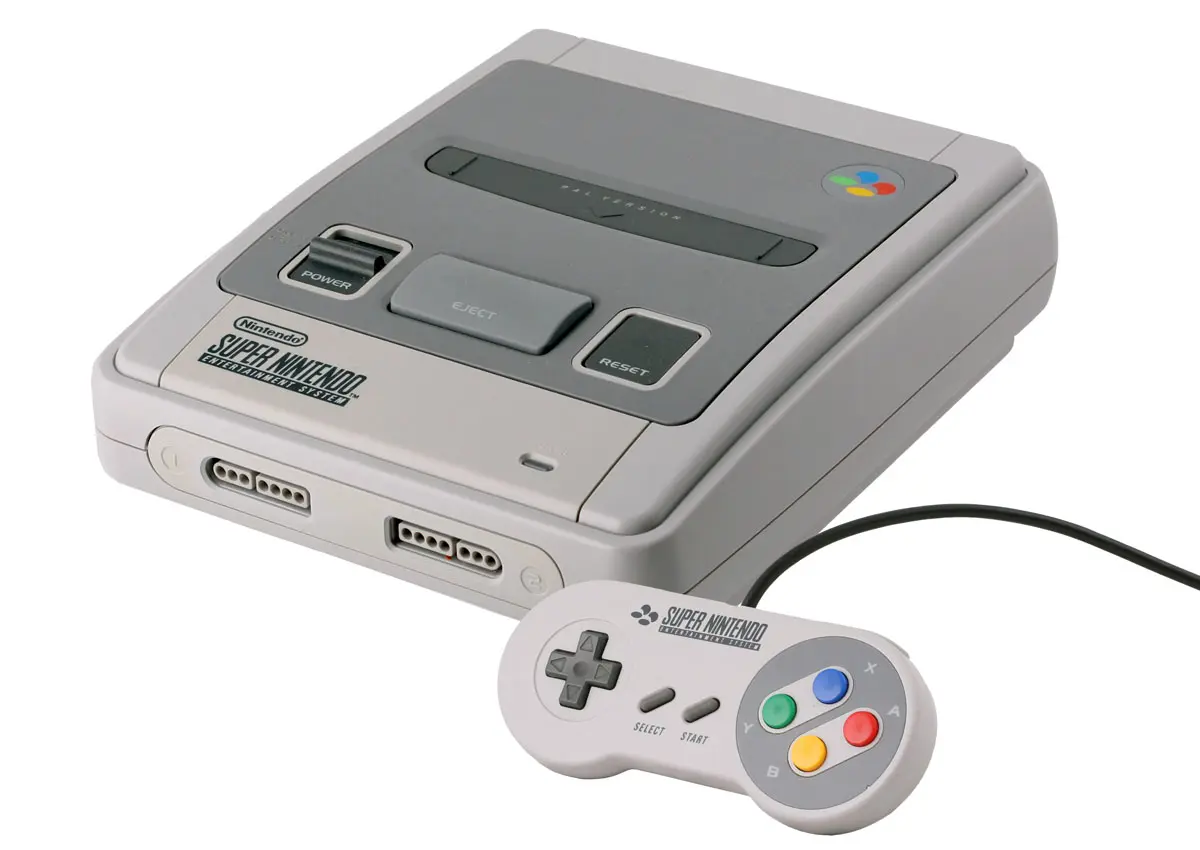Unlocking the Legacy: A Comprehensive Guide to the Super Nintendo Entertainment System (SNES)
The Super Nintendo Entertainment System (SNES) is an iconic gaming console of the early 1990s that shaped modern gaming and continues to hold a special place in the hearts of enthusiasts. This article will delve into its history, features, game library, cultural impact, and relevance today.
The Origins of the SNES
You know, there’s something about the Super Nintendo Entertainment System (SNES) that just takes me back. You might be too young to remember its actual launch, but I vividly recall that buzz of excitement when Nintendo released it in 1990 in Japan and 1991 in North America. At that time, it felt like a bold new frontier in gaming, especially as it faced off against the Sega Genesis in one of the great console wars. It was intense, like the Pepsi vs. Coke debate, but I was a Nintendo kid through and through.
Gaming back then wasn't just about playing games; it was about picking sides and defending your choice passionately in schoolyard debates. The SNES made headlines with its sleek graphics and iconic games, and in many ways, it set the stage for how we experience gaming competitions today. I'll never forget that feeling of plugging in the SNES for the first time and realizing this was going to change everything.
Revolutionary Features and Technical Specifications
Oh man, the SNES was like a beast of its time! Those 16-bit graphics were mind-blowing, making every pixel pop in ways we hadn't imagined possible. It was like going from black-and-white TV to full-color. Thanks to its Mode 7 graphics—a fancy term for making background rotation and scaling appear so smooth—it really took everything up a notch, especially in games like "Super Mario Kart."
Comparing the SNES to its competitors at that time was like comparing an eagle to a pigeon. Sure, Sega Genesis had its own charms and a freakin’ cool marketing slogan in "Blast Processing," but Nintendo's technical specs provided a depth in games that was hard to beat. It was the first time you really felt like you were stepping into other worlds, and we owe that immersive feeling to those visionary specs.
A Stellar Game Library
Talking about great games, who could forget “Super Mario World,” “The Legend of Zelda: A Link to the Past,” or “Donkey Kong Country”? Those games were—and are—legendary. I spent countless Saturday mornings exploring the vast landscapes of Mario’s world and solving puzzles in Hyrule. And, yes, I admit to a few marathon sessions sneaking in Zelda sessions past bedtime under my blanket with the volume turned down.
The diversity of genres on the SNES was another big draw. Whether you wanted to fight it out in “Street Fighter II,” explore a sprawling RPG in “Final Fantasy VI,” or get a thrill from fast-paced shooters like “Star Fox,” there was something for everyone. And the storytelling? Top-notch. They weren't just games; they were adventures you lived through.
Cultural Impact and Nostalgia
The thing about the SNES is, it wasn't just a console; it was a culture-defining moment. Nintendo truly strengthened its brand, introducing characters that have become household names. Mario, Link, and Donkey Kong—they aren’t just game characters; they're legends. This cultural impact isn't something that just fizzled out. Instead, it grew, feeding the nostalgic hunger for retro gaming today.
And let’s be honest, while some of us are diving back into these classics for a hit of nostalgia, others are discovering them for the first time. It's become this beautiful blend where the old meets the new, giving all generations a taste of history in the console gaming scene.
The SNES in Modern Times
With the retro gaming trend taking off, SNES is back in the limelight, shining with all its pixelated glory. The SNES Classic Edition, released in 2017, revitalized that frenzy. It was like getting part of our childhood back, compact and ready for a new generation. That little console became a hard-to-find holiday gift overnight—with good reason!
This resurgence isn’t just about the games; it’s also about the spirit they imbue. They don't just carry stories; they carry memories. And seeing the SNES celebrated anew—both physically and digitally—is a triumph for those who remember the joy of original releases.
Collecting and Preserving SNES Consoles and Games
Collecting SNES games and consoles is like being a curator of history—each game and piece has a story. If you’re looking to start a collection, here’s a tip: do your research, always check seller reviews, and don't be afraid to negotiate prices at yard sales. And beware of fakes; they look convincing but usually don’t hold up in play.
For those wanting to keep their consoles and cartridges in mint condition, my advice is simple: keep them clean, dry, and dust-free. Old school consoles can get temperamental over time, especially the pins in the cartridge slot, so clean them gently with isopropyl alcohol and a cotton swab every now and then.
Emulator Options for Classic Game Experience
Emulators play a huge role in ensuring SNES games continue to reach new audiences. They can mimic the original hardware, allowing gamers to play SNES titles on modern machines. Playing a round of "Chrono Trigger" or "F-Zero" on your laptop is like a blast from the past—minus the headache of sorting out old cartridges.
However, emulation comes with its ethical considerations. It’s crucial to own the original game if you're going to use an emulator, as downloading ROMs can infringe on copyright laws. But with the increasing availability of digital copies from legal sources, there's a way to marry nostalgia and legality. Just remember—it's about cherishing those golden days of gaming without giving Nintendo headaches over intellectual property.
Conclusion
The SNES has made significant contributions to gaming history and continues to influence the industry today. Whether revisiting favorite games or experiencing them for the first time, the legacy of the SNES remains strong.


